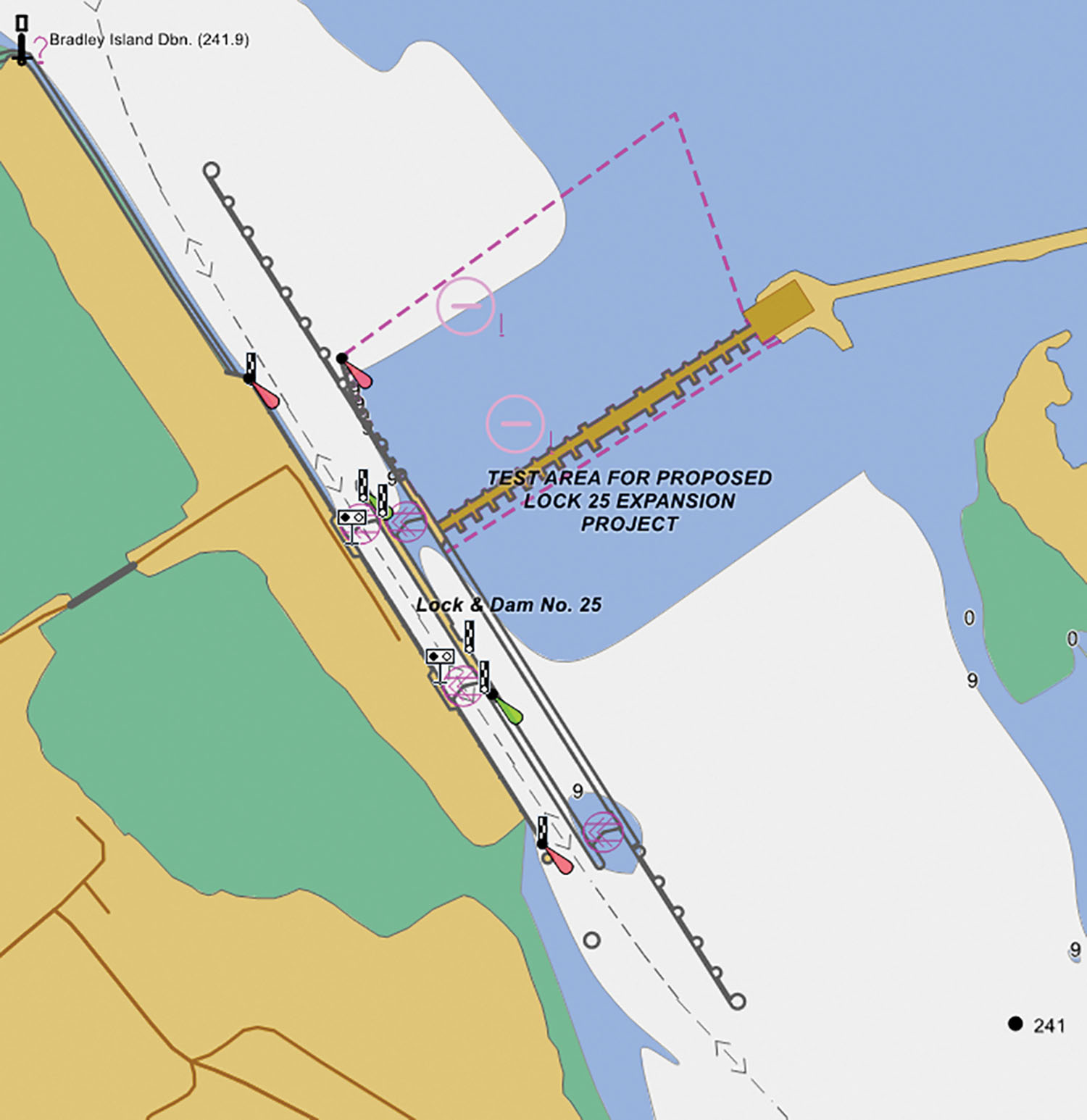If you are a towboat pilot or captain who regularly transits Lock 25 at Winfield, Mo., engineers and designers at the St. Louis Engineer District want your help in helping them decide the location of an approach cell. Your reward will be contributing to ensuring that those features are as safe and efficient as possible.
Beginning on July 1, towboat pilots have the opportunity to view the planned new 1,200-foot lock chamber and downstream cell approach virtually on their electronic navigation charts. A pop-up will provide a brief description of the virtual features, industry review period and an email address to submit feedback. The period for feedback will be for 30 days and will expire on July 31.
The team has designed the process to be as painless as possible. “The main reason we want to do this is to validate the physical modeling by gaining a lot of pilot feedback on the navigability of the new lock chamber,” said Garrett Fleming, a structural engineer with the Corps.
According to the district, Lock & Dam 25 sees about 200 to 250 commercial lockages in July on average. If only 30 percent of transiting pilots and captains run the simulations and give their feedback, they will generate a substantial number—50 or 60—sets of new data points for the design team to use.
The long process of designing a new 1,200-foot chamber for Lock 25 began in the early 2000s with a physical model at the U.S. Army Research and Development Center in Vicksburg, Miss., said Bryan Dirks, technical lead for the new lock chamber. Data gathered from that model helped in the initial design. The design process was paused in 2010 and restarted again in October 2022 when funding came through.
Last October and November, the Corps invited seven river pilots to test out the design on a full-scale bridge simulator. Those runs generated data points that were incorporated into the simulated feature in the chart. The proposed new lock wall for the 1,200-foot chamber will extend further out into the river, necessarily changing the way pilots approach the lock.
The St. Louis District has displayed more than 25 virtual sites in the electronic navigation charts since 2014. This has given industry personnel an avenue to provide feedback for navigation safety. Lock 25 will be the first inland lock to be displayed virtually on an electronic navigation chart.
The pilots testing the model in October and November had no issues with the navigability of the proposed new chamber itself, the team said. But they said a separate approach cell would help them better navigate the approach. The feedback will help the team locate exactly where it should be.
“This is the most important structure we’ve ever done this way,” said Dirks. “So we hope we can get at least 30 percent feedback. Think of it as leaving your Yelp review.”
Feedback on the approach cell can be submitted to the Lock 25 Team by emailing nesplock25project@usace.army.mil.
Caption for photo (click on photo for full image): Screenshot of Rose Point Navigation screen with virtual view of planned new 1.200-foot lock, to give captains the opportunity to provide feedback on the location of a proposed approach cell.




